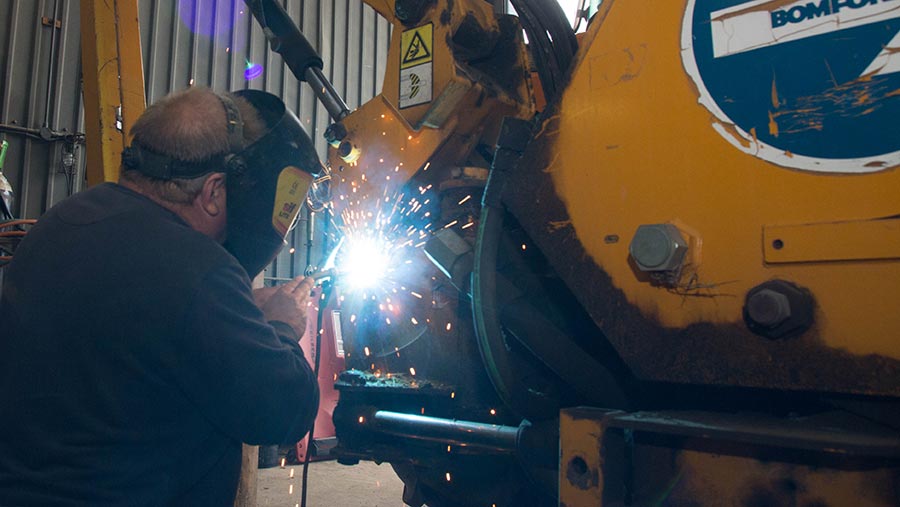New HSE rules on welding fumes come into force
 © Tim Scrivener
© Tim Scrivener Farmers are being alerted to a change in health and safety rules affecting anyone who does welding.
The Health and Safety Executive (HSE) has recently announced that it is reclassifying welding fumes, including those produced from mild steel, as a human carcinogen.
As a result it will no longer permit any welding to be undertaken without suitable exposure control measures being in place, regardless of the duration.
See also: Welding app offers basic joining tips
The new rules – which will apply to all industries, including agriculture – are that any exposure to welding fumes must be controlled by effective engineering measures.
In a workshop or indoor environment, this will typically be local exhaust ventilation (LEV) which will also control workers’ exposure to manganese, which has been linked to neurological effects similar to Parkinson’s disease.
Where LEV alone does not adequately control exposure, respiratory protective equipment (RPE) must be provided and employees who carry out welding suitably instructed and trained in its use.
RPE will also be expected for anyone who is welding outdoors.
Update risk assessments
Rob Gazely, farm consultant and health and safety specialist at Strutt & Parker, explained: “There is new scientific evidence from the International Agency for Research on Cancer (IRAC) that exposure to welding fumes can cause lung cancer and possibly kidney cancer.
“As a result, the HSE announced in February that with immediate effect, it is strengthening its enforcement expectations for welding fumes on the basis that general ventilation does not give sufficient control.”
Mr Gazely said a farm’s risk assessments and safe systems of work should be updated to reflect the change.
Any protective equipment will need to be subject to a suitable programme of checks and LEV systems thoroughly examined by a competent person and tested annually.
Action required to reduce risk of cancer-causing fumes
- Make sure exposure to any welding fumes released is adequately controlled using engineering measures – typically local exhaust ventilation (LEV).
- Make sure suitable controls are provided for all welding activities, regardless of duration. This includes welding outdoors.
- Where engineering controls alone cannot control exposure, then adequate and suitable respiratory protective equipment (RPE) should be provided to control risk from any residual fumes.
- Make sure all engineering controls are correctly used, suitably maintained and are subject to thorough examination and testing where required.
- Make sure any RPE supplied is subject to an RPE programme. This should encapsulate all the elements of RPE use you need to ensure that your equipment is effective in protecting the wearer.
Source: HSE

